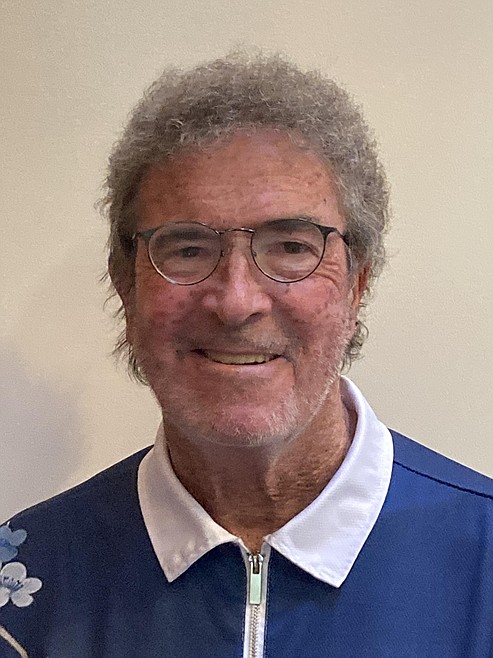THE CHEAP SEATS with STEVE CAMERON: How do Zags deal with lack of size? Well, shoot
Coeur d'Alene Press | UPDATED 1 year, 12 months AGO
There was a headline someplace that hit on Gonzaga’s rough start to the season.
I don’t remember the exact wording, but the main point was that the Zags have “time to grow” between now and March.
In other words, the NCAA tournament.
That growth theory made me smile, because the type of growth needed to avoid getting stuck with three losses in December — and a drop to No. 15 in the AP poll — isn’t the kind that Mark Few can fix.
The defeats so far have to come at hands of two teams in the top five, Purdue and Connecticut, along with a talented but inconsistent bunch at Washington.
Purdue features last season’s national player of the year, man mountain Zach Edey.
Edey checks in at 7-foot-4 and 310 pounds (with an eight-foot wing span), so good luck running any interior offense with that giant in the middle.
UConn revolves around 7-foot-2, 280-pound sophomore Donovan Clingan, who creates basically the same sort of dominance in the paint that Purdue gets from Edey.
Even U-Dub gave the Zags nightmares when they tried to create any type of penetration game, or attempted running their usually effective offense through Graham Ike.
IN THAT case, it was 6-11, 255-pound Cameroonian Franck Kepnang who made life miserable, blocking five shots, altering several more, and keeping the Zags from getting much joy in the post during UW’s 78-74 upset.
Unfortunately, the Zags do not have “time to grow” tall enough or strong enough to avoid problems with these huge people who are keeping them from success around the hoop.
This Gonzaga roster doesn’t feature any true power in the middle.
Ike is 6-9 and can score with a variety of his left-handed moves, but he’s not terrifically strong — especially compared to college hoops’ elite post players.
In fact, Ike really is a forward, and would be much more effective playing alongside a 7-footer who can bang some bodies and draw attention.
The same can be said for Anton Watson, who plays like crazy and is the Zags’ hardest-working rebounder — but Anton is “only” 6-8, which is impressive in airports but hardly scares players like Edey or Clingan.
Watson also lacks Ike’s smoothness and soft shooting touch, which means he’s often trying to muscle his way to the basket.
Gonzaga’s youngest big man is redshirt freshman Braden Huff, who is 6-11 and 240.
Huff, though, is more of a small forward despite his size.
He’s one of the team’s best outside shooters, but getting production in the post has so far been difficult because Braden is not an explosive player and, so far, he hasn’t looked strong enough to smash his way inside against good teams.
You can see Huff ultimately becoming a big-time scorer as he learns to put the ball on the floor to create shots — and hits the weight room to give him some heft for those crowds that clog the lane.
It’s fair to say that this Gonzaga team would be entirely different if 7-foot, 260-pound brute Oumar Ballo hadn’t transferred to Arizona when Tommy Lloyd got the Wildcats' coaching job.
Lloyd recruited the center from Mali in the first place, so it was natural that Ballo’s development would evolve in Tucson rather than Spokane.
Another potential big man who got away was 7-footer Efton Reid III, who sat on the bench almost all season at Gonzaga last year after transferring from LSU.
Reid left to find more playing time, and he’s now at Wake Forest — coming off a 12-point, 14-rebound game (with a couple of blocks) during a win over Rutgers.
Reid perhaps would have changed the look of this current group.
Bottom line: Few may have missed on the opportunity to keep Reid around, but in any case, the Zags now have no bruiser in the middle.
DOES THE lack of a true big man in the middle mean Gonzaga is doomed against the game’s better teams?
Will they be helpless in the chaos of March Madness?
Not necessarily.
The Zags certainly could have beaten Purdue (73-63 loss) and they almost certainly would have survived Washington if they’d made any reasonable percentage of their outside shots.
UConn may be the best team in the country, so maybe that game was out of reach.
But the other two?
Here’s a stat that boggles the mind: In their three losses, the Zags have put up 34 shots from 3-point range in each of the second halves — and missed ALL of them.
They were zero-for-16 in the second half against Purdue, and zip-for-9 after the break in the other two defeats.
I’m sorry, but that’s crazy.
Yes, they’re missing transfer Steele Venters, the 6-7 wing who drained 41 percent from deep during three seasons at Eastern Washington, but tore up his knee before the regular season even started.
Still, guards Ryan Nembhard and Nolan Hickman are good shooters, Huff is hitting 42 percent and freshman Dusty Stromer has a nice stroke that bodes well for the future.
I’m not suggesting that everything will be cotton candy by March, but I DO believe that this will become a decent shooting team.
Without a power game in the post, it’s become a must.
Shoot a lot of 3s in practice, lads.
Email: [email protected]
Steve Cameron’s “Cheap Seats” columns appear in The Press four times each week, normally Tuesday through Friday unless, you know, stuff happens.
Steve suggests you take his opinions in the spirit of a Jimmy Buffett song: “Breathe In, Breathe Out, Move On.”

